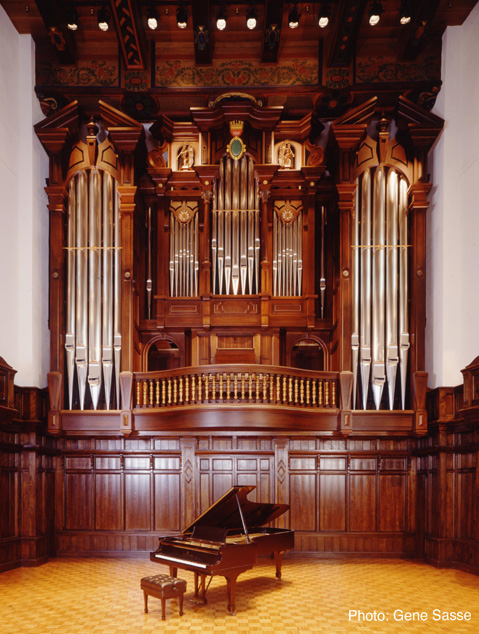
You wouldn’t know from the exterior of this building that inside, magic happens. C.B. Fisk, Inc., Pipe Organs in Gloucester, Massachusetts is home to a talented team of craftspeople who build world class pipe organs. Their skills range from the ancient crafts of metallurgy and cabinetmaking to modern computer-aided design.
Physicist and organ maker Charles B. Fisk founded the firm in 1961 to build pipe organs with mechanical action, as they were built in the time of J. S. Bach. Fisk organs typically contain thousands of pipes, most made from lead/tin alloys cast into sheets in the company’s workshop.
We visited C.B. Fisk, Inc. recently, where we began our tour with Greg Bover, Vice President for Operations. Here you see him with a 1:16 scale model of Harvard University Memorial Church, one of three current instruments in the process of being built.

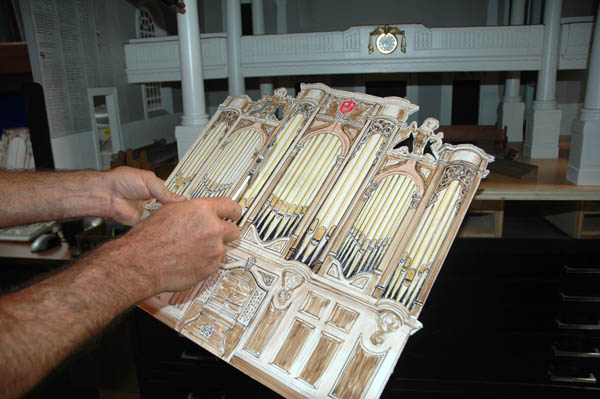
It can take anywhere from five months to a year and a half to build a pipe organ And that is just the actual construction on site. Once the organ is taken apart and moved for installation, another five months to a year of tonal finishing work must be done. “That’s when the fun really begins, ” says Greg. “There are over 3,000 pipes that are going to be in this organ. They’ll all be shop-voiced, which means they’ll all be made to work to a level. But when we get to Harvard, each one of those pipes has to be adjusted to the acoustics of the building. The real work of the sonority starts once the thing is installed. Then the voicers go in, in two person teams, and go through every single pipe.”
I marvel at the stunning detail of the working model — the corinthian-like columns, the dental moldings, and the working clock. Greg explains that some rooms really warrant it. Creating a detailed model is “a huge factor in what the organ looks like and feels like. If we had fudged the cornices, it wouldn’t have had the same effect.”


“It’s math. It’s physics. It’s architecture. It’s cabinet making. Metallurgy — all of it. Organ builders — you’ve got to be a jack of all trades.”
Pipe builder William Finch gives us a tour of the entire company, beginning with the voicing room, where each individual pipe is adjusted until it “speaks properly.” In the wood shop we watch organbuilder and voicer Nami Hamada working on the keyboard for Memorial Church.


The casting room is where lead and tin are smelted down to form three different alloys. The pure lead has trace amounts of antimony, bismuth, and copper. These impurities stiffen the metal. William explains that harder the metal, the more the overtones are accentuated when air passes through the pipe.


We enter the pipe room, greeted by the sound of blues blasting from a boom box. Here several staff members are working on various aspects of fabricating pipes.
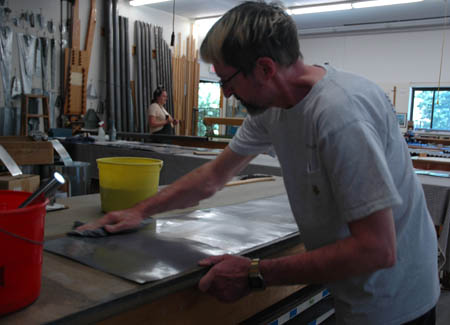

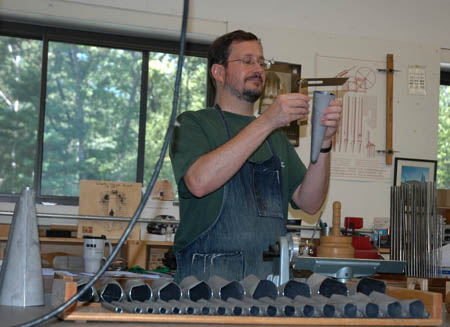
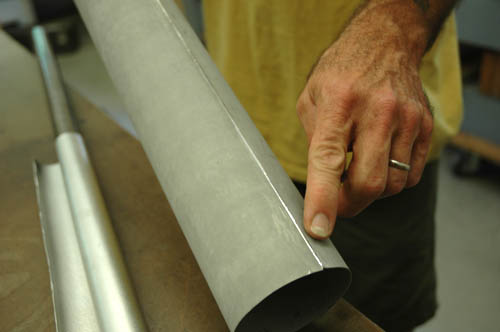

Listening to people throughout the shop talk about the process of making pipe organs, it is hard not to notice how the organ’s core parts are attributed with traits of the human body. The pipe has a “tongue,” “body,” and “feet.” It is said to “speak” and must be voiced properly. The reeds of the pipe sit on a wind “chest.” It’s as if the finished product is a living, breathing, thing.

